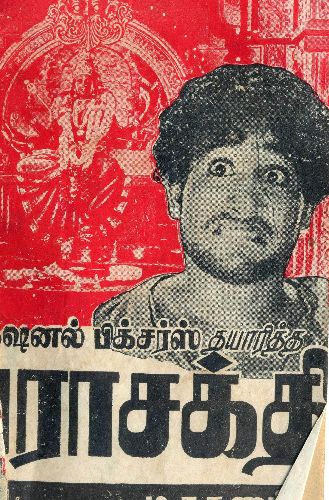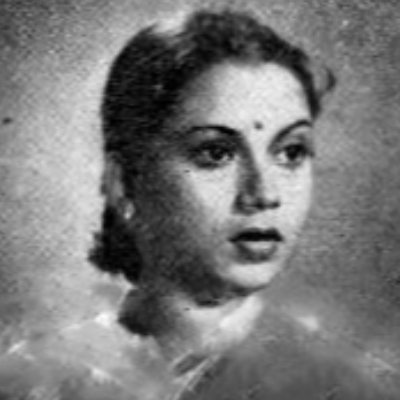This section is for paid subscribers only. Our subscription is only $3700/- for one full year.
You get unlimited access to all paid section and features on the website with this subscription.
Subscribe to read full article
This section is for paid subscribers only. Our subscription is only $37/- for one full year.
You get unlimited access to all paid section and features on the website with this subscription.
Not ready for a full subscription?
You can access this article for $2, and have it saved to your account for one year.
- Release Date17/10/1952
- GenreSocial Drama
- FormatB-W
- LanguageTamil
- Run Time188 mins
- Length5166 meters
- Number of Reels17 reels
- Gauge35 mm
- Censor RatingU
- Certificate Date14/10/1952
One of the most controversial films in the history of Tamil cinema, Parasakthi is important for more than one reason. It owed its success in large part to its dialogues and enhanced the value placed on dialogue writers. It spawned more such films, each one replete with similar assonant monologues. M Karunanidhi, who wrote the dialogues for Parasakthi used this film to express his ideas on religion, god, and priesthood. Sivaji Ganesan, who was still working with drama companies, made his debut in this film as the lead actor. He later went on to act in more than 200 films in a career that lasted fifty-two years.
Adapted from a successful play by Pavalar Balasundaram, the film’s story set against the backdrop of the Second World War is about three brothers in Rangoon and their sister in Madras. The brothers are separated in the chaos of war; Gunasekaran, the youngest, travels to Madras in search of his sister and finds she is a destitute widow. He does not reveal his own identity as he is powerless and cannot offer her any help. He sets himself up as her protector; when the priest tries to molest her inside a temple, he inflicts grievous injuries on the priest. Driven to despair, his sister tries to kill herself, along with her infant child. All end up in court where matters are sorted out and the family is united.
The emphasis on family ties and kinship roles formed the fabric of the plot. Black-marketing and the unseemly conduct of priests were also given the considerable significance and rationalist ideas permeated every scene. But the film remains predominantly aural, with the characters delivering long monologues which were entertaining in themselves. Gramophone records and later, audio cassettes of these dialogues were released. The story was told mostly through static mid-shots. The film also retained much of its character as a stage play. The songs in the film, popular as they were, added to its aural character. Some of the tunes were based, on songs from Hindi films, including Sunehra Din (1949), and Babul (1950). Two songs were rehashes from two Urdu films made in Lahore, Dopatta (1951) by the legendary Ghulam Haider.
The DMK was launched as a political party in 1949 and M Karunanidhi, as one of its leading ideologues, using the characters in this film as mouthpieces for his rationalist ideas, with digs at mythological episodes and rigid, inflexible casteism. The film opens with a song on the glories of Dravidian heritage. As it ran into difficulties with the censors, a special committee of the Film Censor Board was asked to view and clear Parasakthi.
(From the book The Eye of The Serpent by S Theodore Baskaran)

Cast
-
Sivaji Ganesan
Gunasekaran -
Pandari Bai
Vimala -
K M Nambirajan
Vellai Swamy -
K P Kamakshi Sundaram
Priest -
K S Angamuthu
Jolly -
Kannadasan
Judge -
M N Krishnan
Kuppan -
S S Rajendran
Gnanasekaran -
S V Sahasranamam
Chandrasekaran -
T K Ramchandran
Venu -
T P Muthulakshmi
Kantha -
V K Ramaswami
Narayana Pillai
Crew
-
BannerNational Pict, Bombay , AVM Productions, Madras
-
Director
-
Producer
-
Music Director
-
Story Writer
-
Screenplay
-
Dialogues
-
Cinematography
-
Sound Recording/ Audiography
-
Art Director/Production Design








.jpg)



